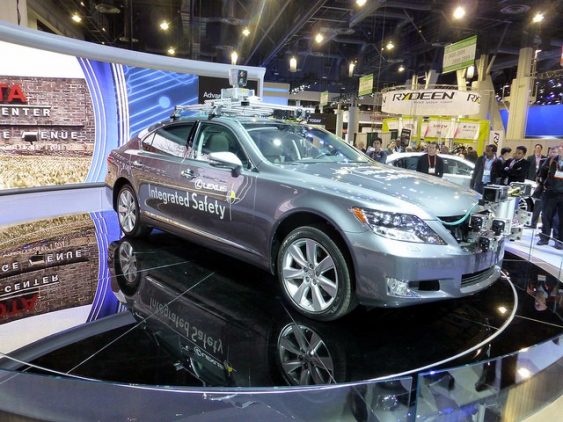
Self-driving smart cars aren’t science fiction any longer. It’s only a matter of time before we see this technology become adopted across the automotive and other tech industries. We might very well see the advancement of autonomous cars mirror that of autonomous drones, namely those that use complex computer systems and sensor suites to operate without the assistance of a human.
For these machines to to safely function in this manner, they often feature advanced collision avoidance systems. Unmanned aerial vehicles are one thing, but automobiles containing human passengers are another entirely. Getting this technology right is of utmost importance if it has any hope of being safely adopted at large scale.
Earlier this year, the first U.S. fatality using self-driving technology occurred when a Tesla S collided with a truck in Florida. The crash took place on May 7 in Williston, Florida and represents the first known fatality in over 130 million miles of autopilot operation. Tesla said in their statement that it was the result of “extremely rare circumstances,” like the positioning of the trailer against the brightly lit sky. The company further restated that their Autopilot is an assistance feature only, and that drivers are required to keep both hands on the wheel for the duration of the trip.
Accidents like this are unfortunate but not malicious in nature. Many critics of self-driving cars have noted that computer piloted vehicles would be subject to dangerous remote hacking attempts. Preventing deliberate attempts to disrupt the operations of these vehicles is a serious safety concern – especially as automakers face growing cyber security threats.
John Carlin, U.S. assistant attorney general for national security said, “If you were able to do something that could affect a large scale of an industry — like 100,000 cars — you could see that being in the arsenal of a nation-state’s tool kit as a new form of warfare,”
Many modern vehicles are equipped with increasingly advanced features such as complete internet integration as well as a variety of third party applications that could alternatively be compromised. It will be interesting to see what anti-tampering software or measures will be integrated into these systems as a defensive measure. Collision avoidance systems in smart vehicles must be properly developed and protected.
Drones face many of the same safety issues, but are fortunately unmanned. Collision avoidance is relatively new to the game and UAVs equipped with it are significantly more expensive than their lower-tech counterparts. Collision avoidance isn’t purely to protect the device itself – it is also to protect bystanders and property. Google and Amazon both have plans for drone delivery services. Such initiatives understandably must be coupled with safety features to ensure that packages are delivered without incident. This will likely include safeguards to prevent remote tampering that might alter or disrupt deliveries.
Vehicles that don’t require humans piloting them certainly sounds like science fiction. It’s not anymore, but these safety and security concerns will need to be addressed before this tech can be safety used on the large scale. How Tesla, Google, Amazon, and others will address this remains to be seen.

